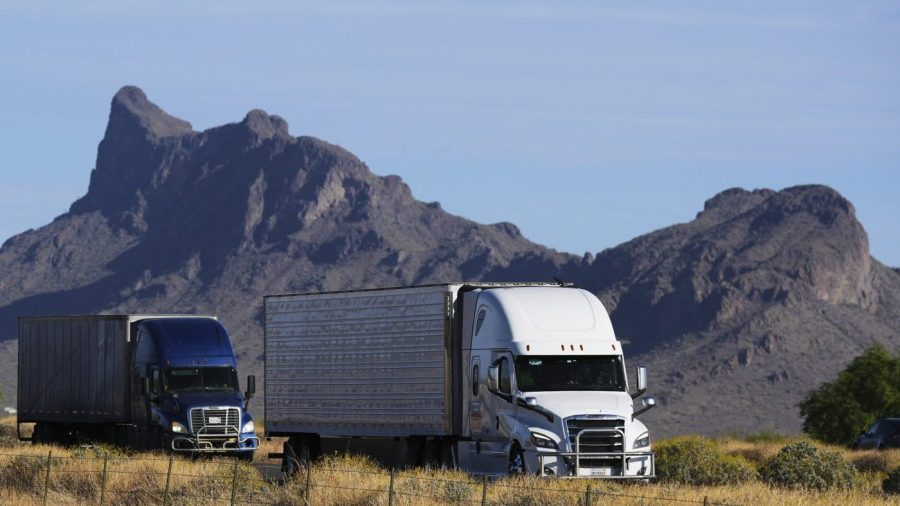Opinion: Bigger Freight Trucks Spell Highway Disaster

The State of America’s Roads and the Dangers of Bigger Freight Trucks
America's road infrastructure is in dire need of attention. Nearly 40 percent of major roads are in poor condition, costing the average driver approximately $1,400 annually in repairs and lost time. These deteriorating conditions not only affect drivers but also pose serious risks to public safety. In fact, the U.S. has some of the most dangerous roads in the developed world.
This situation has led to calls for action against legislative proposals that would allow larger and heavier freight trucks on the nation’s highways. These trucks exceed the current weight and size limits, which could further strain an already overburdened infrastructure. Maintaining existing restrictions on truck size and weight is crucial for protecting drivers, pedestrians, and taxpayers alike.
Current Truck Size Limits and Their Importance
For many years, lawmakers have recognized that certain vehicles are simply too large for the country’s highway system. The current limits on the Interstate Highway System include a maximum weight of 80,000 pounds and two 28-foot trailers in length. These standards are designed to reduce wear and tear on roads and improve traffic safety. They are based on extensive research and evidence that supports their effectiveness.
Studies have shown that larger and longer freight trucks are more prone to accidents and inspection violations. For example, a Department of Transportation study found that 91,000-pound trucks operating in Washington State were 47% more likely to be involved in significant crashes and had 18% more brake inspection violations. In Idaho and Michigan, the crash rates for 97,000-pound trucks were 99% and 400% higher than those for trucks meeting federal weight and size standards.
Increased Risk of Crashes and Damage
Heavier trucks and those with multiple trailers are more difficult to maneuver and require longer stopping distances. This makes them inherently more dangerous on the road. A 2020 academic analysis using weigh-in-motion data from 34 states showed that a 1% increase in cargo weight (about 300 pounds) increases the likelihood of a fatal accident by 0.27%.
Semi-truck crashes already result in around 5,500 deaths and 150,000 injuries each year. Allowing larger and heavier trucks would only make this crisis worse. Additionally, there is a strong link between large trucks and road damage. A nine-ton big rig can cause roughly 410 times more damage than a typical car.
Financial Burden on Taxpayers
A 2023 analysis revealed that about 70,000 local bridges nationwide do not have sufficient weight ratings to safely accommodate 91,000-pound trucks. Replacing these bridges would cost taxpayers approximately $80 billion, likely through increased taxes and tolls. These additional costs would fall disproportionately on low-income households, making the situation even more challenging.
Closing these bridges to heavier trucks is not a viable solution either. Brian Keierleber, an engineer in Buchanan County, Iowa, explained that posting bridges to restrict heavy trucks is not enforceable, as trucks often ignore these restrictions. He emphasized that such bridges would need to be replaced, but few local governments have the funds to do so.
Legislative Proposals and Their Implications
Several legislative proposals in Congress could lead to the normalization of 91,000-pound trucks and beyond. One bill introduced in the last Congress would create a state opt-in pilot program allowing these heavier trucks on the Federal Interstate System. Another bill would increase the allowable weight on stinger-steered car haulers from 80,000 pounds to 88,000 pounds.
These changes would make it harder for states and localities to maintain their roads and bridges, leading to more dangerous conditions and higher costs for taxpayers. While politicians and advocacy groups may disagree on how to fix America’s roads, they should agree that introducing larger and heavier vehicles is a risky move.
A Call for Bipartisan Action
The path forward requires bipartisan cooperation and a commitment to real solutions. Lawmakers must avoid policies that threaten the safety and integrity of the nation’s infrastructure. By maintaining current truck size limits, Congress can protect drivers, pedestrians, and taxpayers from the dangers and financial burdens associated with larger freight trucks.
David Williams is the president of the Taxpayers Protection Alliance. Daniel Greene is the senior director of consumer protection and product safety at the National Consumers League.
Post a Comment for "Opinion: Bigger Freight Trucks Spell Highway Disaster"
Post a Comment